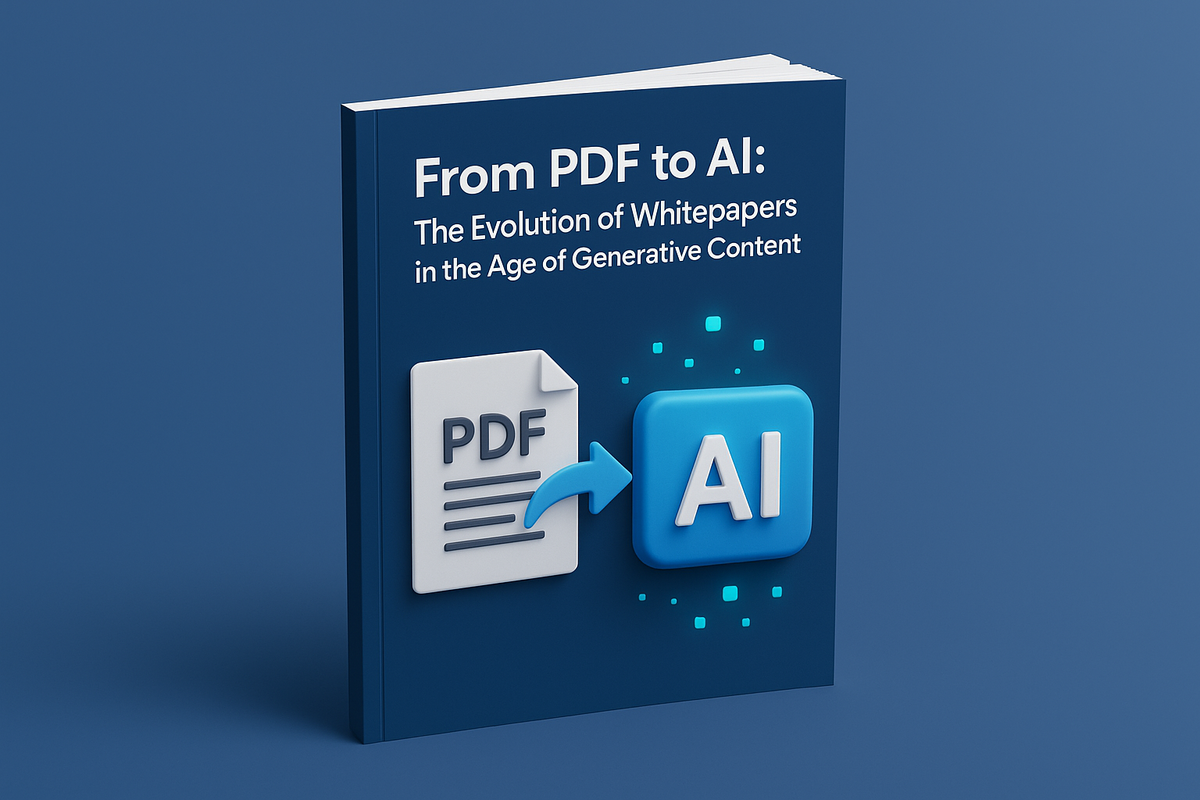For years, the humble PDF has been the go-to format for whitepapers. Marketers relied on them as trust-building assets—deep dives into industry trends, research, and solutions. But in 2025, the rules of engagement have changed. Buyers are digital-first, impatient with static documents, and increasingly expect personalized, interactive, and AI-enhanced experiences.
The rise of Generative AI is redefining what whitepapers can be. They are no longer just downloads that sit in inboxes; they’re becoming dynamic, living documents that evolve with the reader, making them more engaging and powerful than ever before.
The Traditional PDF Era
The PDF whitepaper served its purpose well:
-
Easy to distribute
-
Consistent formatting across devices
-
Printable and shareable
But it also came with limitations. PDFs are static, lack interactivity, and provide little to no insight into how readers engage with the content. Did they read the entire document? Did they stop on page three? Traditional PDFs couldn’t answer these critical marketing questions.
As buyer journeys became more complex, it became clear: static PDFs no longer matched the dynamic needs of modern B2B marketing.
The Shift to Interactive & AI-Driven Whitepapers
Generative AI has opened the door to a new era of content creation. Whitepapers are no longer confined to static layouts; they can now be:
-
Interactive Experiences
-
Embedded videos, infographics, and animations make content more engaging.
-
Quizzes and clickable elements help buyers self-navigate to what matters most.
-
-
Personalized in Real Time
-
AI-driven whitepapers can adjust tone, length, and examples depending on who’s reading.
-
A CIO might see high-level strategic insights, while a technical lead sees detailed implementation data—all within the same asset.
-
-
Data-Rich Engagement
-
Marketers gain visibility into reading patterns, most-clicked sections, and drop-off points.
-
This transforms whitepapers from a “black box PDF” into a measurable, data-powered lead generation tool.
-
Benefits of AI-Powered Whitepapers
✔ Higher Engagement – Dynamic content captures attention longer than static PDFs.
✔ Smarter Lead Qualification – Behavior data from AI-powered whitepapers helps identify which prospects are ready to buy.
✔ Scalable Creation – Generative AI speeds up drafting, formatting, and even visual design, allowing marketers to publish more whitepapers without sacrificing quality.
✔ Future-Proof Branding – AI-driven formats align with modern buyer expectations, positioning brands as innovative and forward-thinking.
Real-World Example
Consider a cybersecurity company releasing a traditional PDF whitepaper on “AI in Threat Detection.” The PDF is downloaded, but the marketer has no idea if it was read or skimmed.
Now imagine the AI-enhanced version:
-
Readers can interact with charts to see region-specific attack trends.
-
A generative AI layer answers follow-up questions in real time (“What does this mean for mid-sized banks?”).
-
Engagement data tells the company which sections drive the most interest, feeding back into sales enablement.
The result? Deeper engagement, more qualified leads, and a measurable ROI.
Challenges & Considerations
The shift from PDF to AI-driven formats isn’t without challenges:
-
Adoption Costs: Interactive platforms and AI integration may require upfront investment.
-
Data Privacy: Personalization relies on data, making compliance and transparency critical.
-
Content Authenticity: With AI drafting support, companies must ensure whitepapers remain credible and authoritative.
Still, the benefits outweigh the hurdles—especially as B2B buyers increasingly expect dynamic, consumer-grade experiences in professional settings.
The Future of Whitepapers
In the near future, whitepapers will likely evolve into AI-powered knowledge hubs—living documents that update automatically as new data becomes available. Instead of publishing a new whitepaper every year, companies could deploy a self-updating asset that evolves with the industry.
This transformation will make whitepapers:
-
More relevant (always up-to-date)
-
More engaging (reader-driven experiences)
-
More valuable (insights that convert into sales)
Conclusion & CTA
The whitepaper is far from dead—it’s evolving. From static PDFs to AI-driven, interactive experiences, whitepapers are becoming smarter, more dynamic, and more aligned with modern buyer behavior.
Companies that embrace this evolution will not only capture more attention but also build trust, authority, and stronger pipelines in a crowded digital marketplace.
Ready to take your whitepapers beyond PDFs?
At Whitepapers Online, we help B2B marketers leverage AI, interactivity, and predictive distribution to turn traditional assets into powerful lead generation engines. Learn more here.

